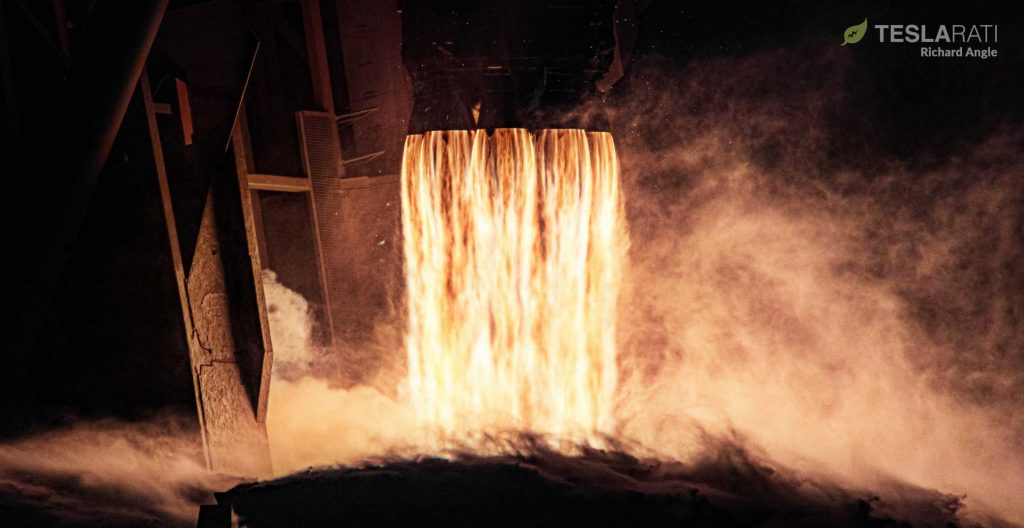A Falcon 9 rocket has performed SpaceX’s first last-second launch abort in years, shutting down the booster’s main engines and preventing liftoff just milliseconds after ignition.
Scheduled to lift off at 9:22 am EDT (13:22 UTC) on March 15th, SpaceX will now wait until no earlier than (NET) 8:21 am EDT (12:21 UTC) on Wednesday, March 18th for the sixth 60-satellite Starlink mission’s next launch attempt. Featuring an exceptionally flight-proven Falcon 9 booster and marking the second time ever SpaceX has reused a payload fairing, yesterday’s launch abort is also unique in its own right.
Notably, shortly after the launch countdown froze and Falcon 9 shut down at T-00:00:00, a launch operator – on-console either in Florida or at SpaceX’s Hawthorne, CA headquarters – revealed that the rocket had triggered a “launch abort on engine high power”. To explain that decision, a little background on how SpaceX launches its rockets and what exactly abort conditions are is necessary.
Software has always been a central part of SpaceX’s launch vehicles, treated more like a first-class citizen in design and engineering instead of the reluctant necessity other launch providers have frequently relegated it to. For anyone that’s watched numerous SpaceX launch webcasts, some might recognize the familiar “vehicle is in startup” callout that made around T-1 minute to liftoff. Standard on most modern launch vehicles, SpaceX’s Falcon rockets use onboard computers to take over their countdowns shortly before launch.
This is mainly done to allow the vehicle to simultaneously analyze thousands of channels of telemetry far faster and more reliably than humans ever could. During today’s launch attempt, that meant that Falcon 9 saw something it didn’t like just milliseconds before it was scheduled to command the release of the pad’s hold-down clamps and lift off.

Per one of SpaceX’s on-console engineers, the specific issue Falcon 9’s computer flagged was an “engine high power” alert. Soon after, SpaceX provided an update on Twitter, stating that the abort was “triggered due to out-of-family data during [an] engine power check” – putting the blame more on the sensors and software used to determine engine thrust than the engine hardware itself. An actual hardware or software failure that caused one or several booster engines to exceed their design limits could have potentially damaged B1048’s Merlin 1Ds, likely requiring weeks of repairs or a full swap with a different booster.
Given that Falcon 9 B1048 has already performed four orbital-class launches, hardware issues would not come as a major shock, but the successful static fire test it completed on Saturday made that far less likely. SpaceX’s confirmation that it was looking at an “out-of-family” reading thankfully means that only one of several thrust sensors showed the Falcon 9 booster producing too much thrust.

With any luck, post-ignition launch aborts will continue to be extremely rare for SpaceX’s Falcon launch vehicle family. The last such abort occurred in February 2016, more than four years and several booster ‘Block’ iterations ago.
Starlink L6 (V1 L5) is now scheduled to launch on Wednesday, March 18th, giving SpaceX workers some 72 hours to inspect Falcon 9 B1048’s engines, replace thrust sensors, tweak software, and prepare for a second launch attempt. Drone ship Of Course I Still Love You (OCISLY), fairing recovery ships GO Ms. Tree and GO Ms. Chief, and another support vessel or two remain on station in the Atlantic Ocean and will have to wait a bit longer for their next rocket recovery attempts.
Check out Teslarati’s newsletters for prompt updates, on-the-ground perspectives, and unique glimpses of SpaceX’s rocket launch and recovery processes.

(adsbygoogle = window.adsbygoogle || []).push({});
<!–
–>
var disqus_shortname = «teslarati»;
var disqus_title = «SpaceX rocket performs first last-second launch abort in years, delaying Starlink mission»;
var disqus_url = «https://www.teslarati.com/spacex-starlink-last-second-falcon-9-launch-abort/»;
var disqus_identifier = «teslarati-133269»;

